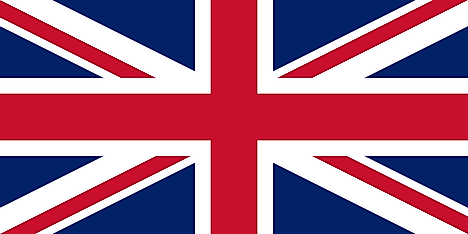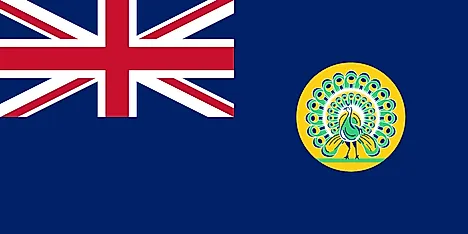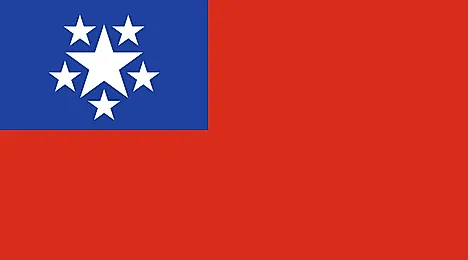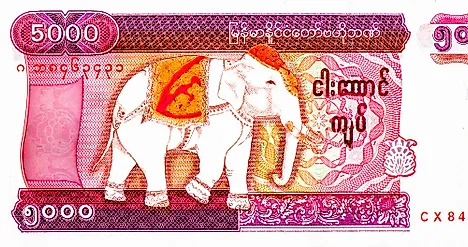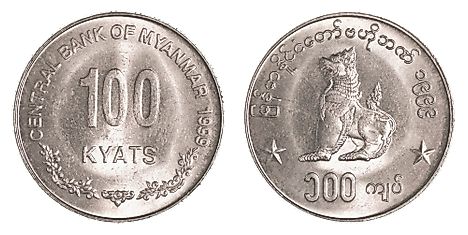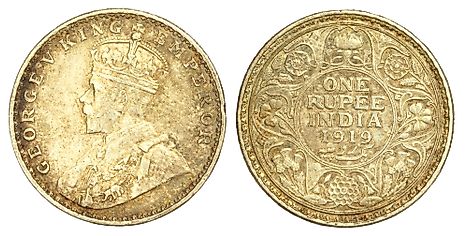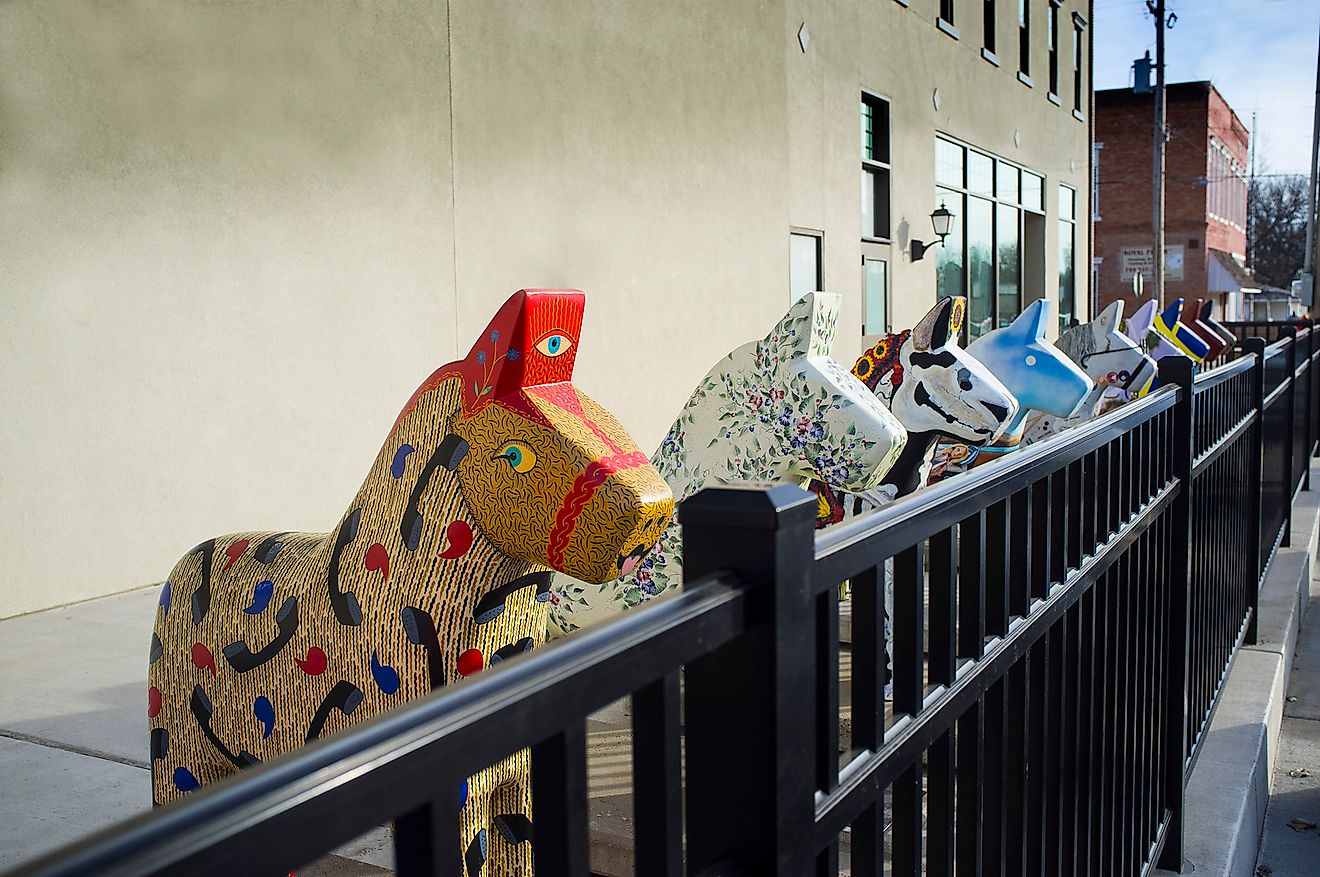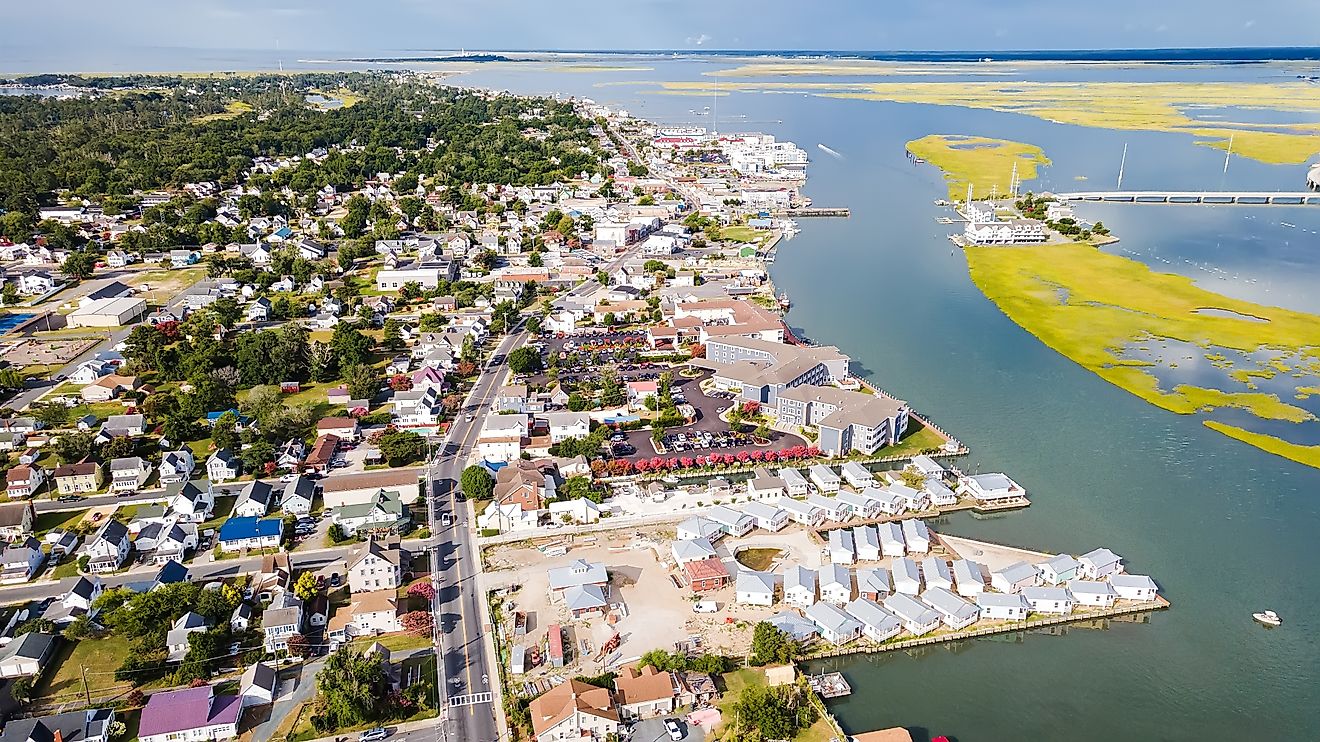Flags, Symbols, & Currencies of Burma
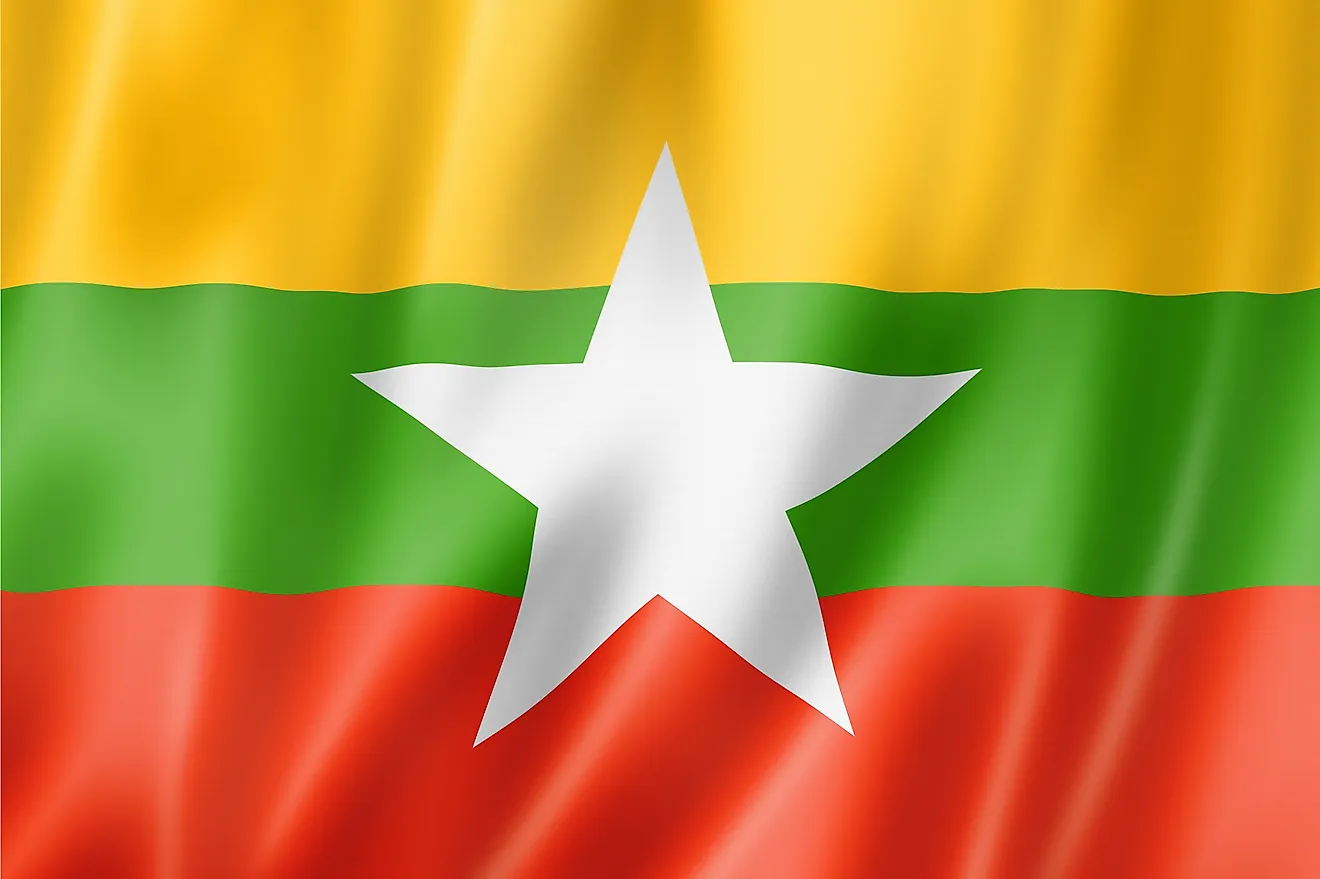
Myanmar (Burma) adopted the current flag on October 21, 2010, as a replacement of the old flag which had been in use since 1974. The flag's design consists of three equal horizontal stripes of yellow (top), green, and red with a large white five-pointed star centered on green and partially overlaps onto the adjacent colored stripes. The flag design and colors is a revival of the triband colors used by Burma from 1943-45, during the Japanese occupation. Theyellow color symbolizes solidarity, green symbolizes greenery as well as peace and tranquility, and red represents courage and decisiveness. The white star in the middle stands for the country's unity. The national flag has a height to length proportion of 2:3.
History of the flag of Burma
Prior to adopting the 2010 flag, Burma used two, almost identical flags, whose origins are linked to the Burmese Resistance. The first flag was adopted in 1948, following independence from the British. The flag consisted of a red field with a blue canton. The blue canton featured a large white 5-pointed star surrounded by five smaller stars. In 1974, Burma was declared a socialist republic by Ne Win and adopted a new flag. The new flag also had a red field with a blue canton. However, the blue canton featured 14 white, five-pointed stars, encircling a rice plant within a gear. The current flag was proposed in 2007 and accepted after a 2008 referendum. It was hoisted for the first time shortly before 1500 hours on October 21, 2010.
Symbols of Myanmar
National Coat of Arms of Burma
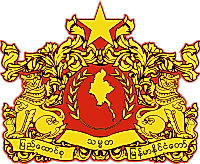
The seal of Burma was adopted 2008 and consists of the country's golden map centered on red background and surrounded by 14 olove branches (seven on each side). Two chinthe (mythical lions) surround the branches, with each lion facing opposite directions (left lion facing left and right lion facing right). The lions are standing on a scroll bearing the name of the state: REPUBLIC OF THE UNION OF MYANMAR in Burmanese. At the top of the seal is a five-pointed goldeb star, while Burmese flower surounds the other parts of the seal.
National Anthem
- Anthem Title: Kaba Ma Kyei ("Till the End of the World")
- Music composer and Lyricist: Saya Tin
- Date of Adoption: Septermber 22, 1947
Kaba Ma Kyei ("Till the End of the World") has been Myanmar's national anthem since 1947. It consists of the traditional Burmase and Western-style parts. Saya Tin composed the music in 1930 and wrote the lyrics in 1947. According to the Burmese traditions, those who sing the anthem should bow at the end of the anthem to show respect to the country.
Kaba Ma Kyei
တရားမျှတ လွတ်လပ်ခြင်းနဲ့မသွေ၊
တို့ပြည်၊ တို့မြေ၊
များလူခပ်သိမ်း၊ ငြိမ်းချမ်းစေဖို့၊
င့်တူညီမျှ၊ ဝါဒဖြူစင်တဲ့ပြည်၊
တို့ပြည်၊ တို့မြေ၊
ပြည်ထောင်စုအမွေ၊ အမြဲတည်တံ့စေ၊
အဓိဋ္ဌာန်ပြုပေ၊ ထိန်းသိမ်းစို့လေ။
(ကမ္ဘာမကျေ၊ မြန်မာပြည်၊
တို့ဘိုးဘွား အမွေစစ်မို့ ချစ်မြတ်နိုးပေ။)
ပြည်ထောင်စုကို အသက်ပေးလို့ တို့ကာ
ကွယ်မလေ၊
ဒါတို့ပြည် ဒါတို့မြေ တို့ပိုင်နက်မြေ။
တို့ပြည် တို့မြေ အကျိုးကို ညီညာစွာတို့
တစ်တွေ
ထမ်းဆောင်ပါစို့လေ တို့တာဝန်ပေ အဖိုးတန်
မြေ။[
Till the End of the World
Accompanied with justice and freedom;
our nation, our motherland.
To bring peace to all people;
the nation having equal right and pure policy,
our nation, our motherland.
Let us preserve with vow
for perpetuity of our heritage of the Union.
As long as the world exists, we love Myanmar,
the true heritage of our ancestors.
We shall safeguard the Union by sacrificing our lives.
This is our nation, our motherland and our own land.
Let us serve unitedly for the interest of our nation, our
motherland.
That is our duty for the precious land.
The Currency of Myanmar is the Burmese Kyat
The official currency of Burma is the Burmese kyat, abbreviated as "K" or "Ks." The term kyat is derived from kyatha (ancient Burmase unit equivelent to 16.3 grams of silver). The present kyat was adopted in 1952 to replace the rupee introduced by the Japanese during their occupation of Burma. Burmese kyat is issued in coins and banknote of various denominations.
Coins
Kyat coins currently in circulation were introduced in 1956, four years after adoption of the third kyat. The coin denominations intriduced were 1, 5, 10, 25 and 50 pyas and 1 kyat. The coins featured chinthe on the observe and the coin value surrounded by Burmese flower on the reverse. In 1983, new coin series were issued in the denominations of 5, 10, 25, 50 pyas and1 kyat. Currently, the coins in circulation are in the denominations of K1, K5, K10, K50, K100.
Banknotes
The Union Bank of Burma introduced the first kyat banknotes in 1958, in various denominations, including 1, 5, 10 and 100 kyats. Later that same year 50 and 20 kyat notes were introduced. From the time the first banknote was introduced to date, several note denominations have been demonetized in a bid to fight black marketeering. The current notes in circulation are in denominations of K50, K100, K200, K500, K1000, K5000, K10,000.
Historical Currencies of Burma
Kyat has been the currency of Burma since 1852, though not officially recognized for a long time. Between 1852 and 1952, the rupee served as the official currency of Burma. When the British occupied Burma, the Indian rupee replaced all the local currencies, including the kyat, which was mainly in the form gold and silver coins. From 1897, Indian rupees were issued, featuring Burmese language rather than the languages spoken in India. The Indian rupee was used until 1942 when the Japanese occupied the country. The Japanese introduced the Japanese rupee, issued in paper only.
In 1945, the country reverted back to the use of Indian rupees. The rupee was used until independence in 1948, with the Burmese rupee replacing it thereafter. The Burmese rupee was in circulation for about five years and were issued in coins and banknotes of various denominations. In 1952, the rupees were replaced at par by the kyat.
